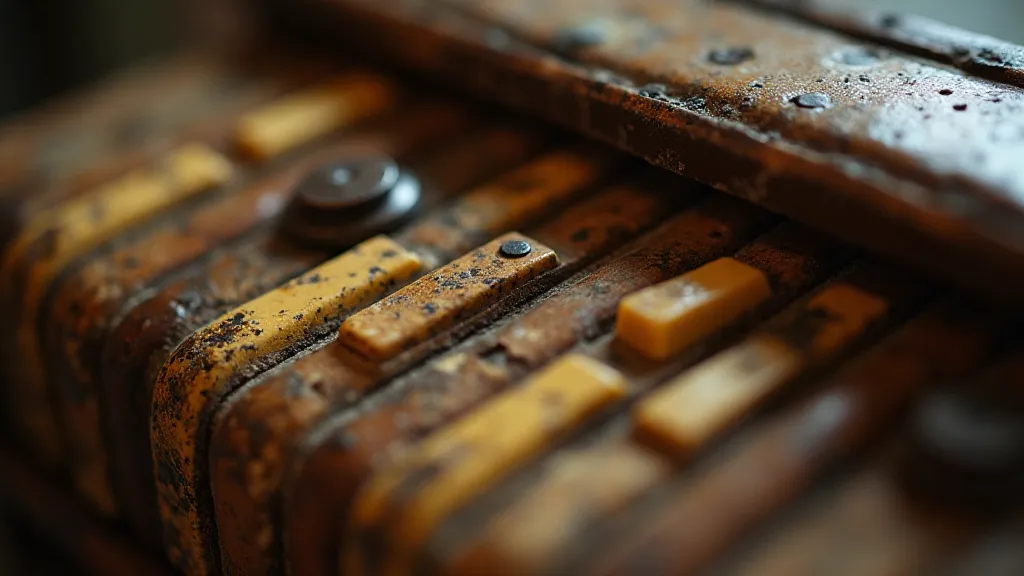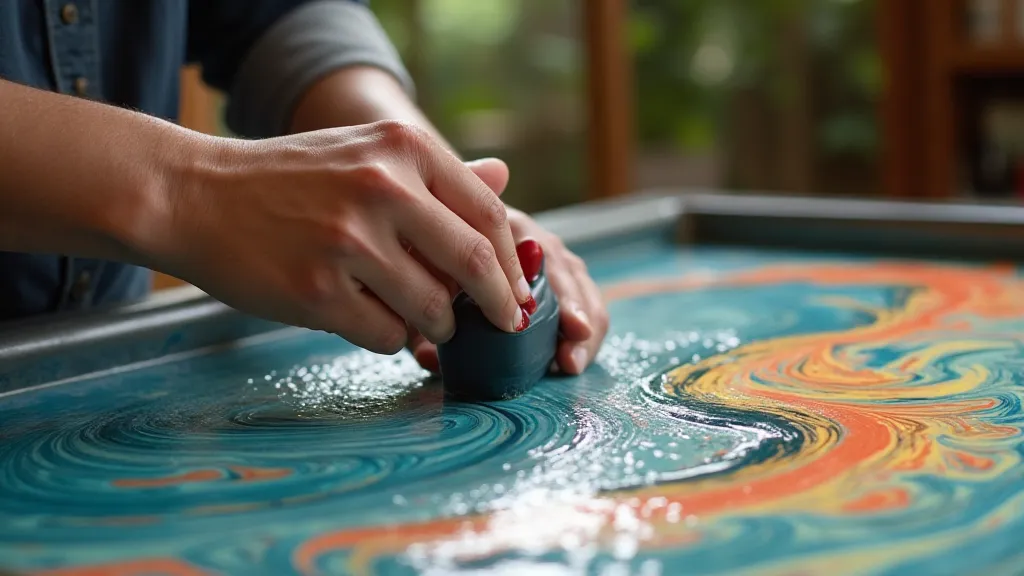Ephemeral Landscapes: Constructing Worlds Through Chance and Intention
There's a particular melancholy that clings to antique accordions. It’s the echo of celebrations past, of dance halls and laughter, now quieted, the bellows slightly stiff, the keys perhaps yellowed with age. Holding one, you're not just holding an instrument; you’re cradling a silent narrative. This feeling, this sense of time layered upon time, resonates deeply with the art of paper marbling. Both involve a surrender to chance, a delicate dance between intention and the unpredictable nature of materials – and both create worlds, albeit in vastly different forms.
Paper marbling, at its heart, is about creating patterns on paper using floating pigments on a thickened water bath. It’s an ancient technique, with roots traceable to 15th-century Persia and Japan, where it was used to decorate endpapers for precious manuscripts and textiles. Imagine the meticulous hands of a Japanese artisan, carefully guiding pigments across the surface of water, creating a swirling nebula of color destined to grace the inside cover of a delicate calligraphy book. The Ottoman Empire adopted and refined the technique, utilizing it to embellish Quranic texts and other significant documents. These early practitioners weren’t just decorating; they were imbuing these objects with a spiritual significance, a beauty that reflected the divine.

Worlds in Water: The Process and the Philosophy
The process itself is deceptively simple. Carrageenan or methylcellulose is dissolved in water to create a viscous, slightly cloudy bath. Then, pigments – traditionally made from natural sources like minerals and plants – are carefully dropped onto the surface. These pigments don't sink; they float, held aloft by the thickening agent. The magic happens when these pigments are manipulated. Tools like combs, rakes, and even feathers are used to swirl and spread the color, creating intricate patterns.
The crucial element is understanding that you can't fully *control* the outcome. You can influence it, guide it, nudge it in a certain direction, but ultimately, the patterns are born from the interaction of the pigments, the thickening agent, and the tools. This is where the connection to the antique accordion deepens. Just as an accordion player must respond to the instrument’s quirks and limitations, a paper marbler must embrace the unexpected. A perfectly planned design can be instantly derailed by a rogue bubble or an unexpected color interaction. And that, surprisingly, is often where the most compelling results are found. It is a testament to the beauty of imperfection, a lesson mirrored in the worn patina of a cherished antique.
Think of the swirling patterns on a marbled paper as tiny landscapes. They evoke vast skies, turbulent seas, and lush, mysterious forests. A simple combination of blue and green might suggest a serene lake nestled between rolling hills. A more complex arrangement of crimson, gold, and violet might conjure a fiery sunset over a distant mountain range. It’s all about interpretation, about seeing the story unfolding on the surface of the paper.
The Writer’s Landscape: Intention and Emergence
This principle of embracing chance and intention holds profound implications for writers, and specifically for world-building. Too often, novice writers approach world-building with a rigid, overly structured plan. They meticulously map out every detail of their fictional world, from the political system to the preferred cuisine. While some level of planning is essential, clinging too tightly to a predetermined outcome can stifle creativity and lead to a flat, lifeless world.
Consider the way a paper marbler works. They have an *intention* – perhaps they want to create a landscape evoking a particular mood or atmosphere. They might choose certain colors and tools to achieve that goal. But they don't dictate the exact shape of every swirl and ripple. They allow the pigments to interact, to surprise them, to guide them in unexpected directions. This is how truly unique and believable worlds are born – not from a rigid blueprint, but from a willingness to collaborate with the creative process itself.
Let your world *emerge*. Start with a few core principles – a fundamental conflict, a unique geographic feature, a distinctive cultural value. Then, let the details arise organically, allowing the needs of your characters and the logic of your narrative to shape the environment. Don't be afraid to deviate from your original plan. Sometimes, the most interesting discoveries are made when you wander off the beaten path. Much like the restoration of an antique accordion, where unexpected discoveries about its mechanics and history may appear, new details in your world may be uncovered with thoughtful consideration.

The Craftsmanship of Beauty and Resilience
There’s also a satisfying craftsmanship that underlies both paper marbling and the preservation of antique instruments. Both are about more than just aesthetics. They are about understanding materials, about respecting tradition, about appreciating the skill and labor of those who came before. Restoring an antique accordion isn’t just about repairing the physical damage; it’s about reconnecting with the history of the instrument, understanding the care and attention that went into its original creation.
Similarly, paper marbling isn't just about creating pretty patterns. It's about mastering a technique that requires patience, precision, and a deep understanding of the materials. Each layer of pigment, each careful manipulation of the tools, contributes to the final result. The process demands a meditative focus, a willingness to surrender to the present moment.
And finally, there’s the sense of legacy. Marbled papers have adorned manuscripts and textiles for centuries, bearing witness to historical events and cultural shifts. Antique accordions have provided solace and joy to countless listeners. Both have left their mark on the world, and their beauty endures, a testament to the power of human creativity and the enduring appeal of handcrafted objects.

The ephemeral landscapes created through paper marbling and the evocative narratives conjured by gifted writers share a profound connection: a dance between intention and chance, a celebration of imperfection, and a testament to the enduring power of human creativity.





